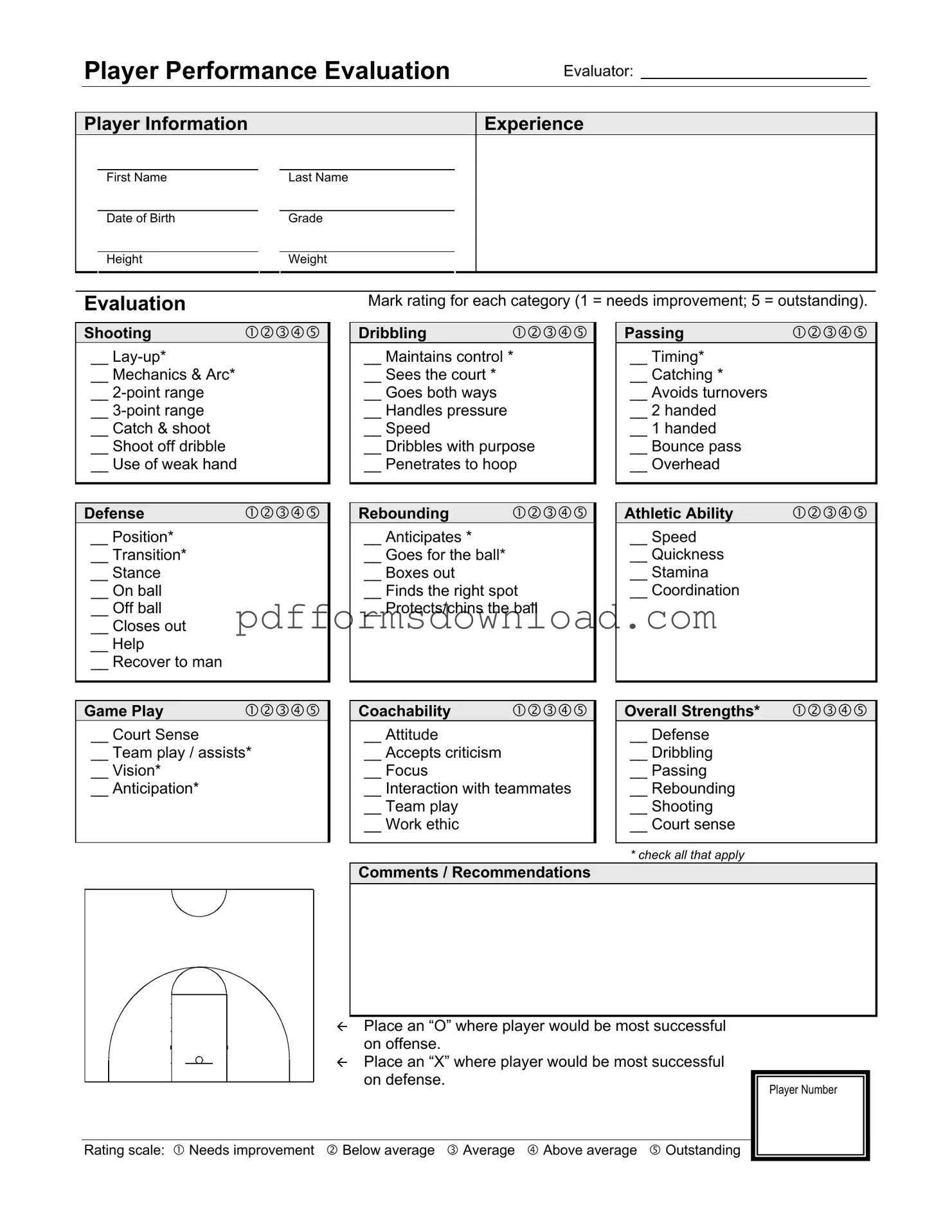What is the purpose of the Basketball Evaluation form?
The Basketball Evaluation form is designed to assess a player's skills and performance in various aspects of the game. It provides a structured way for evaluators, such as coaches or trainers, to rate a player's abilities in shooting, defense, dribbling, passing, athletic ability, and overall game play. This evaluation helps identify strengths and areas for improvement, guiding players in their development and informing coaches about player potential.
How is the evaluation rated?
Each skill category in the evaluation is rated on a scale from 1 to 5. A score of 1 indicates that the player needs improvement, while a score of 5 signifies outstanding performance. Evaluators will mark ratings for each skill, allowing for a comprehensive overview of the player's capabilities. This scoring system helps in comparing players and tracking their progress over time.
What information is required to complete the form?
To complete the Basketball Evaluation form, the evaluator needs to provide specific player information, including the player's first name, last name, date of birth, grade, height, and weight. Additionally, evaluators will mark ratings for various skill categories and provide comments or recommendations. This information is essential for a thorough evaluation and can be useful for future reference.
Can the evaluation form be used for different age groups?
Yes, the Basketball Evaluation form can be adapted for different age groups. While the fundamental skills assessed remain consistent, the expectations for performance may vary based on the player's age and experience level. Coaches can adjust their evaluations accordingly, ensuring that the form remains relevant and effective for players of all ages.
